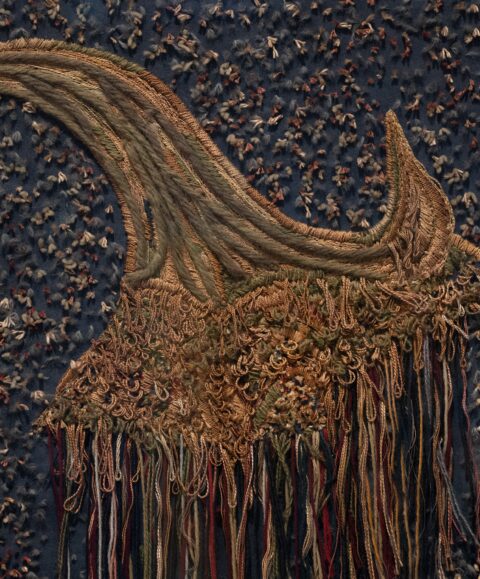
Christine and Janus van Zeegen

- 30 March till 15 September 2024
- Drents Museum
The Drents Museum presents the first retrospective exhibition about this wonderful artist couple from 30 March to 15 September 2024.
Artists Christine van Zeegen and her brother Janus worked together in a special way. Their art was innovative in many ways. Janus made line drawings of motifs from the plant and animal world and Christine translated these into colourful embroidery according to her own ideas.
Their art is innovative in many ways. Christine's art needlework was extremely popular in her time. Janus experimented with sand and other materials in the paint on his own paintings. The artist couple received praise from the likes of Hendrik Petrus Berlage, Jan Toorop and Jan Sluijters. Yet today they are virtually forgotten.



‘'After a hundred years, their work is rightly getting the attention it deserves again.'’

The Drents Museum's collection of visual and applied arts around 1900 contains no fewer than 236 works by the special duo. Some of it is now being shown for the first time in history in its own exhibition and a publication. Contemporary textile artist Alexandra Drenth has been invited to be inspired by the work of Christine and Janus van Zeegen.
Innovators in thread and paint
Christine van Zeegen's embroidery art is progressive. Sometimes she uses loose threads. She plays with loose threads, repeated dot patterns and opts for unusual compositions. The work often has a symbolist undertone. Her art is well received, Christine is the breadwinner in the house.
Experimental matter art
You could consider Janus van Zeegen as the first material artist in the Netherlands. makes paintings of spectacular natural phenomena and underwater scenes. In countless pencil drawings he depicts the contours of praying mantises, phoenixes, owls and deep-sea fish. Sometimes as a basis for his own paintings, sometimes for his sister's needlework works.
Continue embroidering
During the exhibition, a needlework of art travels through Drenthe. Nine craft clubs are working on the canvas. The traveling embroidery can be admired in the Drents Museum towards the end of the exhibition.













